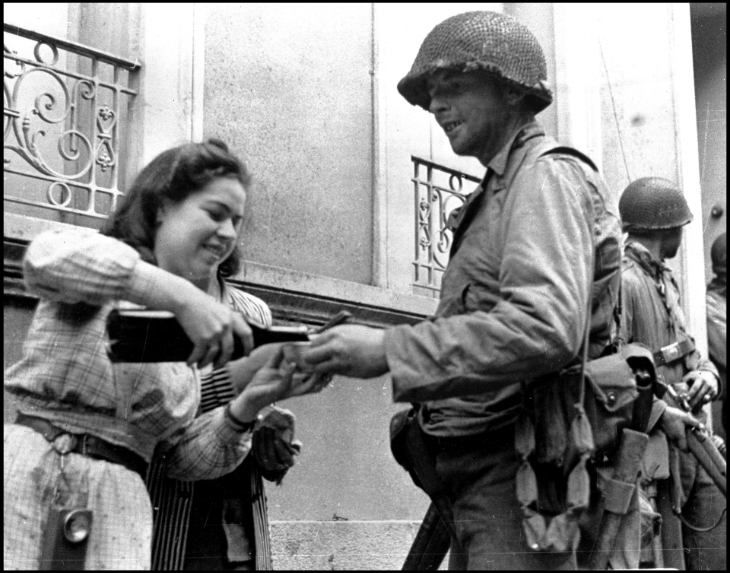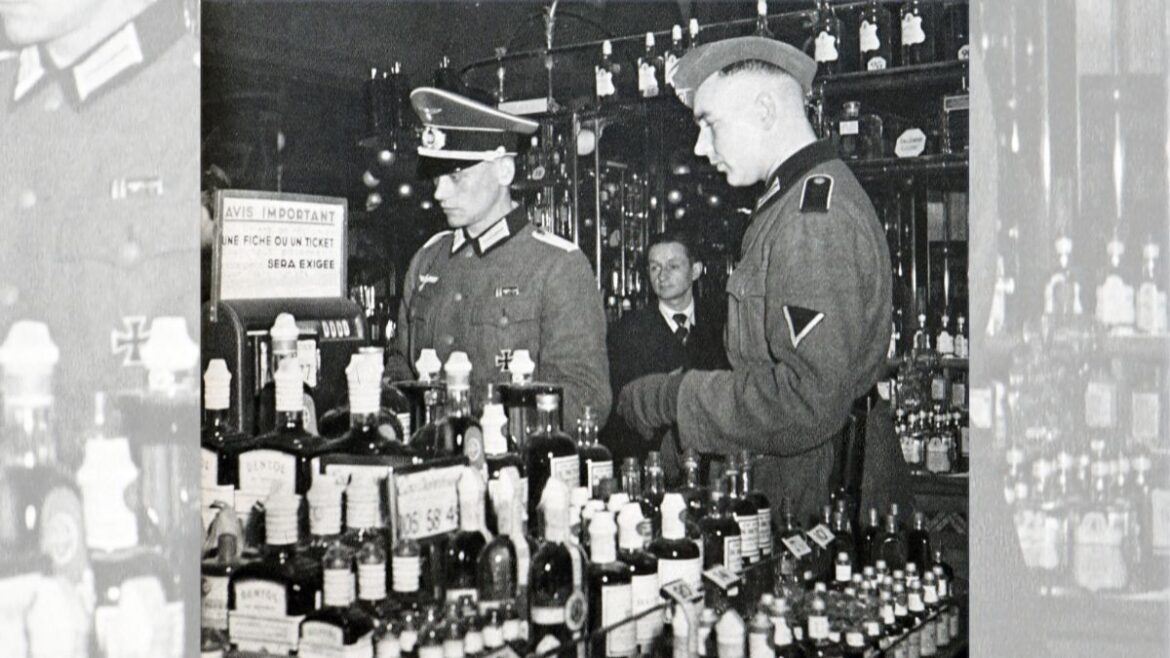There are bottles that await special occasions to get rid of. June 17, 1940 is not one. At the microphone of French radio, Marshal Pétain announces the capitulation. “You have to stop fighting”he declared to a dumbfounded population. That day, in French homes, good bottles remain in the cupboard. For a time.
Immediate consequence of defeat, integrated into the armistice provisions, the Nazi staff can now siphon national resources. Adolf Hitler has announced it: the war effort will require the full and whole requisition of the enemy’s productive apparatus. Starting with its wine production. “A good German cannot suffer the French, but yet he drinks their wines very willingly”wrote the German playwright Goethe in Faust…
Very envied on the other side of the Rhine, the tricolor wine is one of the first foods taken. While the “Pinard of the Poilus”, a patriotic drink par excellence, had boosted the courage of the soldiers of the First World War, he passed the enemy during the second, serving the German war effort under the complacent gaze of the producers.
Viticulturalists with angels
From Bordeaux to Burgundy, from Champagne en Charente, military vans and German side-cars stop in large wine estates to recover their tribute. Coordinated by “Weinführer” (literally “wine chiefs”) dispatched from Berlin, these operations transform the defeat into a bargain for French winegrowers. Producers and merchants take the opportunity to sell their stocks at gold prices, sometimes fifteen or twenty times the initial price, in francs or in Reichsmarks!
Was the third Reich already eyeing the French vineyards before forcing the Ardennes? The division of France does not denume it: traced on June 25, the demarcation line separates the country into two … while including the southwest periphery to the Pyrénées-Atlantiques. History of discouraging allied operations in the Atlantic Ocean, of course, but also to place in the occupied area the Bordeaux and the Cognac region (Charente), two prestigious reserves of Grands Crus.
There are, here and there, some cocardier winegrowers who hide their best bottles, but these resistors are rare.
“French wine and champagne are strategic issues. (…) It is interesting to see that (the demarcation line) is not a straight line that cuts France into two from Nantes to Strasbourg, it includes Bordeaux and Cognac, for example. And in Burgundy, the line does not take everything: just the great vintages! ”confirms Antoine Dreyfus, author of the book Reich grapes (2021), in an interview for the daily newspaper La Nouvelle République.
Thus, money, as much as wine, flow afloat during the occupation. Everything goes there, from rashed wine with the finest champagnes. In the evening, the bistros taken by storm by the uniforms feldgrau resonate with the same unanimous cry: “Wein! Wein! Wein! “ Same rumor of drunkenness in mansions in the capital where the Wehrmacht officers, still in a joke, lock up refined champagnes and cognacs. Viticultural production also wore the rear: as promised by their führer, German households finally taste the victory nectar.
The grapes of anger
Alas, the occupant’s taste for tricolor wines has immediate impact on the local economy. The prices are fired up. At that time when wine was one of the basic foods of the French and French regime-up to 200 liters annual per capita before the war-, it is small consumers who drink. “We only lack wine because we deliver our harvests to Germanyreports the underground newspaper combat, the 1er December 1941. Officially, French wine deliveries to make at the Reich for the 1941-1942 campaign focus on two million hectoliters (…). To these figures, it is necessary to add 13 million bottles of champagne and 18 million bottles of cognac. You also have to add deliveries to the Wehrmacht. ”
On the other side of the spectrum, the producers do not sulk their pleasure: it is the unexpected opportunity to refourguer their stocks. In the commune of Pommard (Côte-d’Or), Marius and Raoul Clerget traders, on the verge of bankruptcy, suddenly surfaced and multiply their turnover by seventy between 1940 and 1944! There are, here and there, some cocardier winegrowers who hide their best bottles, but these resistors are rare. Besides, it is better to hide the stock to sell it more slowly at a significantly more advantageous price.
The wine of honor
After the landing, the war finally begins to turn in favor of the allies. Liberation bottles are immediately unanswered. Welcomed as a hero in Normandy, the GIs of Uncle Sam quickly sit in front of a glass of cider or Calva. “In case you are not aware, the” Calva “is a brutal liquid obtained by a mixture of barbed wire, soapy water, springs of watches and old sardines of boiled tents. The best has a nitroglycerin aroma. I think each American who touches a glass of Calvados should get Purple Heart! ”strangles an American war correspondent, claiming the military medal awarded to the American soldiers injured or killed in combat!

Further east, when Marshal Leclerc and his 2e Armored division (DB) released Strasbourg, in November 1944, the chief of the armed forces tasted the oldest vintage in history, a dry white wine from Alsace dating from 1472. It was necessary to toast, not only to celebrate victory, but above all to reconcile France with the blood of his land.
Once the country has been released and pacified, Franco-German collaboration turns to vinegar. The treatment trials will accuse some winegrowers, taxed with “economic collaboration”, of having enriched themselves in contact with the enemy. However, they will not be able to shed light on dangerous links born from these dark years. “It was the occupying authority that made the law, what did you want me to do?”defends himself the Burgundian merchant Marius Clerget, incarcerated in Dijon after having made colossal profits.
For the resistance fighters of the vineyard, who congratulate themselves for not having given in to temptation, this lack of opportunism turns into a slogan that they print on their bottles: “Not a single drop of wine sold to the Germans during the war”welcome the labels of these patriotic vintages.

